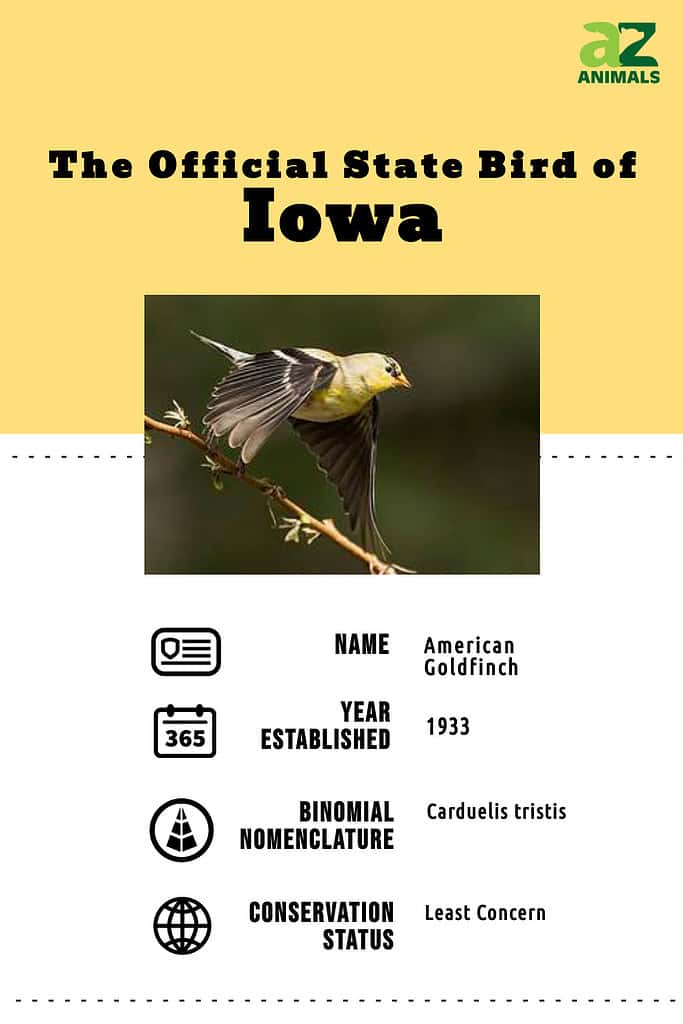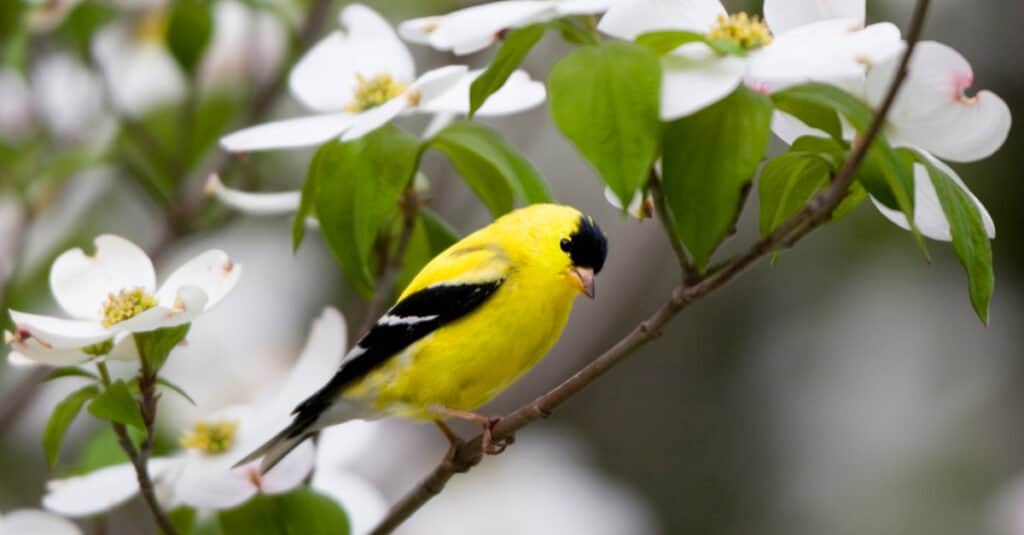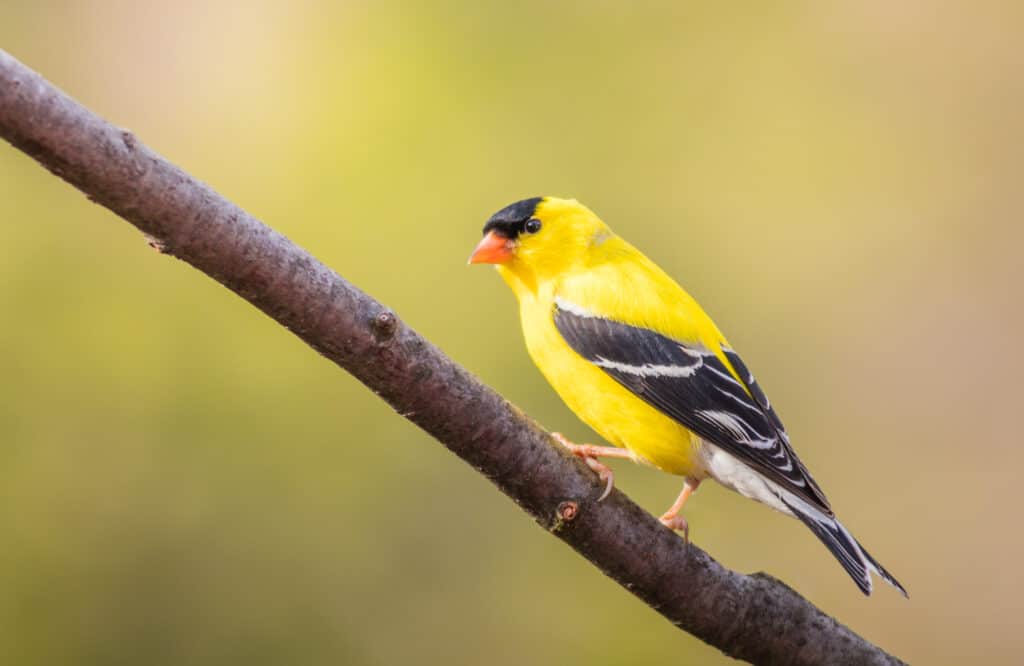Nestled in the heartland of America, Iowa is a state that boasts a rich history and diverse natural beauty. From rolling hills and picturesque farms to bustling cities and small towns, Iowa has something for everyone. But amidst all of its attractions, there is one animal that stands out as a true symbol of the state’s enduring spirit and resilience.
In this article, let’s take a closer look at the official state bird of Iowa and explore its fascinating world. We will uncover its secrets and learn about its behavior. We will also discover what makes it so special to the people of Iowa. So buckle up and get ready to embark on a wild and thrilling journey into the heart of Hawkeye State!

What Is an Official Animal?
An official or state animal is a creature a government has designated as a symbol of a particular state or region. It is typically chosen because it represents the natural or cultural heritage of the state. Sometimes, it has some other significance to the people who live there.
Each state in the United States has its own official animals. Many other countries have similar designations for their regions or provinces. Official animals can be any species of animal, from birds and mammals to reptiles and insects. Most states have official animals from a number of different types: bird, reptile, amphibian, mammal, and so on. The official state bird of Iowa is the American Goldfinch.
Official State Bird of Iowa – American Goldfinch
On May 22, 1933, the eastern goldfinch, commonly known as the American goldfinch, was chosen as the official state bird of Iowa. The Iowa Ornithologists Union put forth a proposal to designate the goldfinch as Iowa’s state bird. It was met with approval by the state legislature. This was largely due to the support of the ornithological group. In addition, the fact that the goldfinch is a common sight in Iowa throughout the year and is easily recognizable by locals. contributed to its approval.
Interestingly, at the time of its designation, it was scientifically referred to as Spinus tristis. However, most modern books now use the updated scientific name of Carduelis tristis.
Appearance

The American goldfinch was established as Iowa’s official state bird in 1933.
©iStock.com/impr2003
During the spring and early summer, male American goldfinches exhibit a striking appearance with their black forehead, bright yellow plumage, black wings adorned with white markings, and white patches above and below their tails. Adult females tend to be less vibrant, displaying a duller yellow color beneath and an olive hue above. In the winter, these birds lose their vibrancy. They appear unremarkable with their plain brown feathers, complemented by blackish wings and two pale wing bars.
Measuring between 4 1/4 to 5 inches in length, the American goldfinch is a small finch species characterized by its long wings, short tail, and short bill.
Behavior
The official state animal of Iowa has a unique behavior. They do not defend their territory once they have started a family. Members of a flock can freely move in and out of each other’s areas, making them sociable birds. They are known to flock together during winter and share bird feeders amicably. Keep an eye out for these birds in a milkweed patch as they gather seeds and fluff during this time of year.
Interestingly, goldfinches have a distinct feeding habit where they provide their newborn broods with a strict diet of regurgitated seeds. This differs from other passerine birds, which typically feed their young a mix of high-protein insects and seeds.
However, this feeding habit offers an unexpected advantage against a common parasite, the cowbird. Cowbirds are known to deposit their eggs in other bird’s nests, including American goldfinch nests, where the larger cowbird hatchling may unfairly receive most of the food from unsuspecting parents, putting the other chicks at risk of starvation. However, since baby cowbirds cannot survive on seeds alone, any cowbird hatchling in a goldfinch nest is inevitably doomed.
Habitat
With the exception of deep forests, goldfinches are mostly easy to spot across much of Iowa. These birds can easily capture attention with their distinct po-ta-to-chip flight call when found in open country. They are often found in large numbers in areas with thistle plants, near bird feeders, and in open woodlands.
Diet
Out of all the native songbirds in North America, American goldfinches stand out as the most consistent vegetarians. They have a particular affinity for thistles, which serve as both a food source and nesting material. Sunflower seeds are another favorite, as you might have noticed if you provide them in a feeder.
Besides these freebies, goldfinches also consume seeds from weeds, grasses, teasel, ragweed, and mullein, as well as birch and maple sap, alder buds, and various berries. Due to their exceptional agility, goldfinches are skilled at extracting seeds from any position. Their short, pointed, conical bills are perfectly designed to crack open and hard packaging tough shells.
Nesting

The American goldfinch nesting activity in Iowa happens late in the season, roughly around July and August.
©Danita Delimont/Shutterstock.com
In many areas, nesting among the official state animal of Iowa commences late in the season, with the bulk of nesting activity occurring during the months of July and August. During the courtship phase, males engage in a mesmerizing display, which involves fluttering their wings and singing in unison.
When it comes to nesting, American goldfinches tend to favor deciduous shrubs or trees, although they may also choose to nest in coniferous trees or thick weeds. These nests are usually situated less than 30 feet above the ground and placed within a horizontal or upright fork, providing the perfect environment for their young to thrive.
Locating a goldfinch nest can be challenging during the summer foliage, but it is easily identifiable once found. Look for a robust, cup-shaped nest sitting in the fork of a branch, typically in a sapling or large bush. The exterior of the nest is made of bark strips, small twigs, and long plant fibers and measures roughly three inches across. Spider web silk is used as glue to hold the nest together.
The nest is so tightly woven that it can fill up with water during rain, putting the lives of its occupants in danger.
Another unique characteristic of American goldfinch nests is their unpleasant and extremely dirty appearance, making them an easy identifier. Unlike other birds that remove fecal sacs even after the babies become active, American goldfinches stop this practice about a week after hatching.
Eggs
American goldfinch eggs typically range from four to six in number, although sometimes they can be as few as two or as many as seven. These eggs are easily identifiable by their pale bluish-white color, which may occasionally have light brown spots. The mother bird is responsible for incubating the eggs, a process that takes approximately 12 to 14 days. During this time, the male provides nourishment to the female, ensuring that she remains strong enough to care for the eggs.
Young
Once the eggs hatch, both parents are actively involved in caring for their young. At first, the male will search for food while the female feeds the hungry nestlings. As time progresses, both parents take on the role of feeding their offspring, with the female gradually reducing her involvement as the young birds grow. In some cases, the male may become the primary provider of food during the later stages of the fledgling period.
The young American goldfinches typically leave the nest around 11 to 17 days after hatching. At this point, they are still relatively helpless and require continued care and nourishment from their parents. However, with each passing day, they become more independent and begin to explore the world around them.
Migration
During the summer months, both male and female American goldfinches join flocks and fly over fields and woodlands, showcasing their distinctive undulating flight. In the winter, some goldfinches travel as far south as Mexico, while others stay in Iowa, thanks in part to the abundance of well-stocked bird feeders or natural sources of thistle and other wild seeds that remain available throughout the colder months.

The lifespan of the official state bird of Iowa is three to six years.
©Rabbitti/Shutterstock.com
Conservation Status
The official state bird of Iowa is a beloved bird, but there is growing concern over a possible decline in their population, with studies suggesting a decrease in Iowa. However, it’s unclear whether this decline is part of a natural fluctuation or a more serious issue.
These birds are protected under the Migratory Bird Act, and their population is still considered stable, with the IUCN Red List listing them as “least concern.”
Fun Facts
- American goldfinches molt their body feathers twice yearly, which is uncommon among goldfinches.
- Breeding among these birds typically occurs later than other North American birds.
- Paired-up American goldfinches produce almost identical flight calls, potentially enabling them to distinguish between members of different pairs.
- While the average lifespan of American goldfinches in the wild is between three to six years, the oldest known specimen lived for 10 years and 9 months.
- American goldfinches are known for their vocal abilities, producing songs both while perched and in flight.
The photo featured at the top of this post is © iStock.com/Irving A Gaffney
Thank you for reading! Have some feedback for us? Contact the AZ Animals editorial team.






